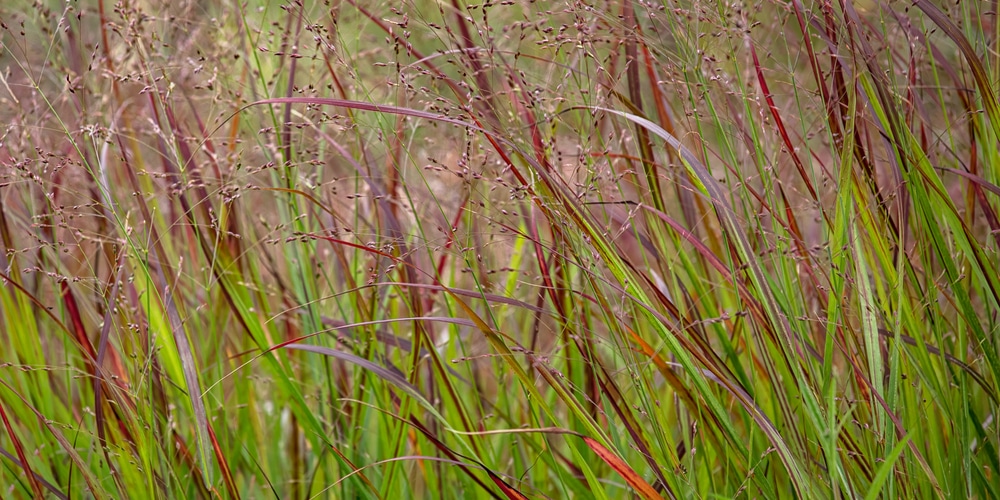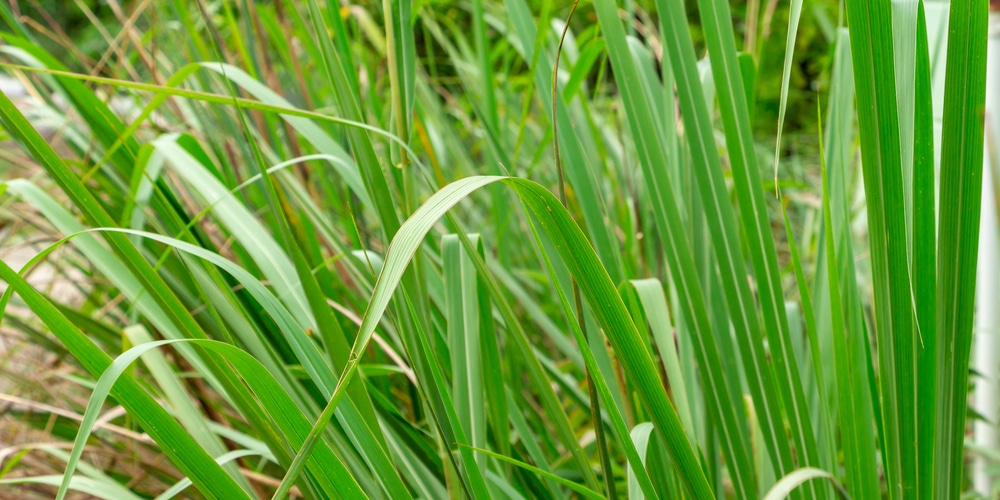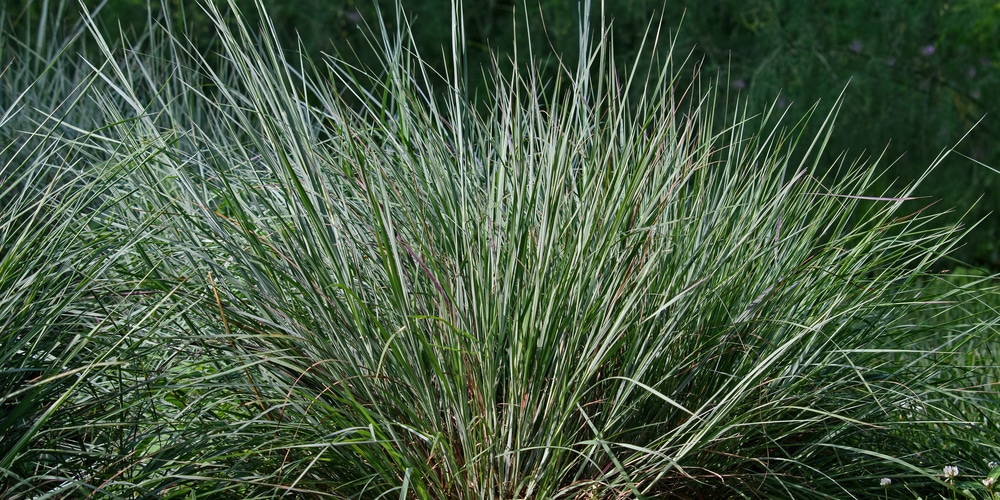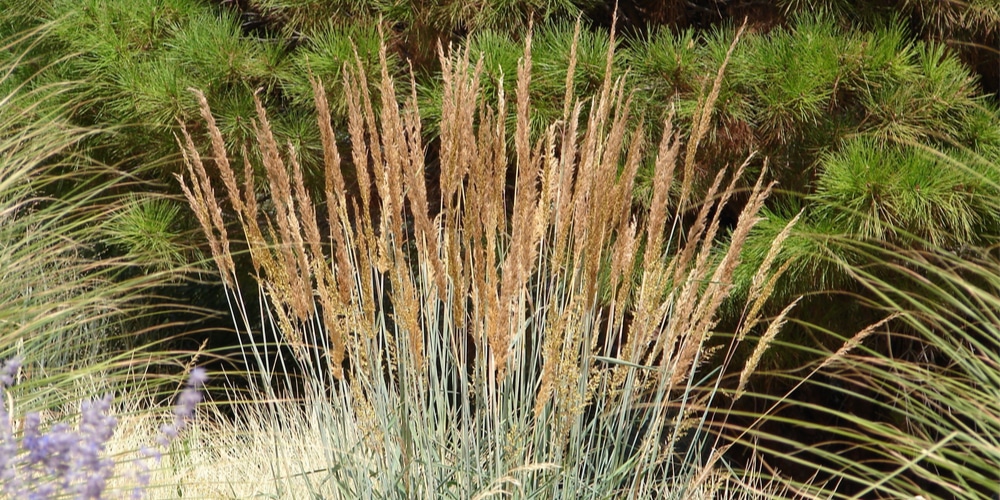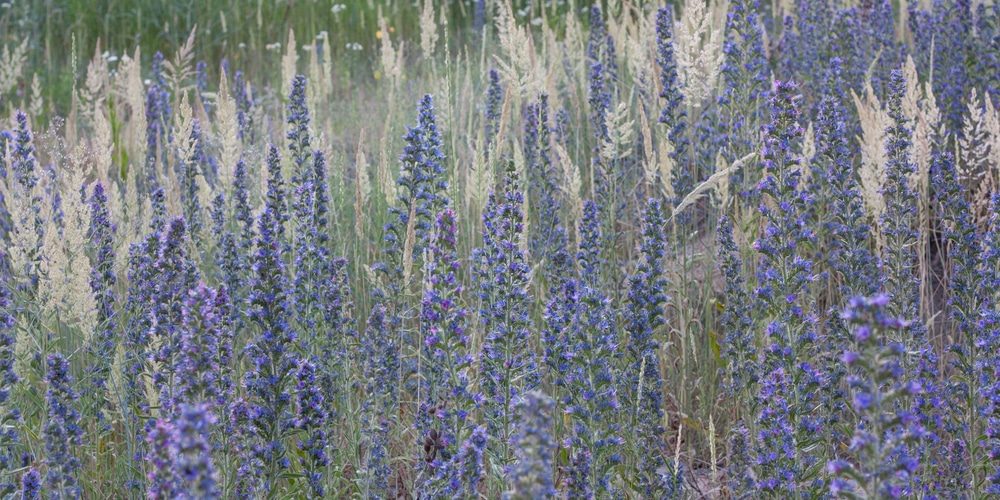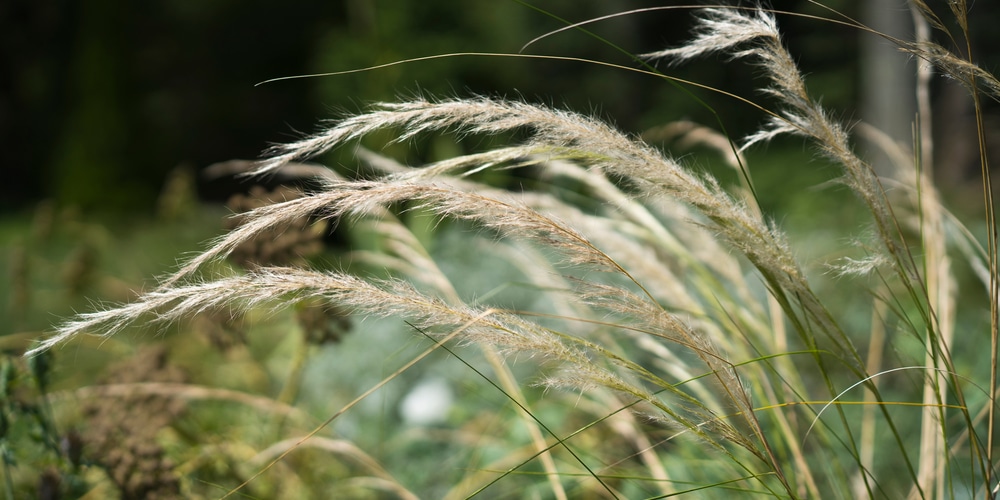Here’s a list of Missouri native grasses. They are excellent for Missouri landscaping or a Missouri lawn. They don’t need a lot of maintenance, as they’ve been growing here long before we were scaping and land.
Most of Missouris native grasses would be described as warm season grasses, but there are a few cool-season varieties as well.
Warm Seson Grasses Native to MO
1. Big Bluestem Grass
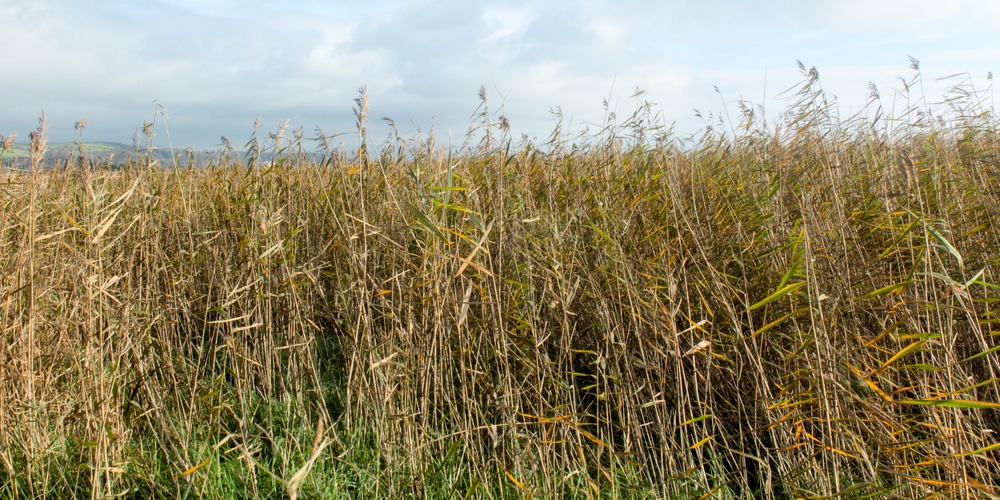
“Andropogon gerardii” – Native to Missouri and the eastern United States, it is a perennial bunchgrass growing 4-7 ft tall with leaves that are 10–25 cm long and 1–2 cm wide. The roots can penetrate as deep as 3 feet into the soil. The grass produces many large, showy plumes of light brown flowers in the fall from August until frost develops, which then give way to twisted black seed heads that remain on the stems through winter.
2. Switchgrass
“Panicum virgatum” – This Missouri native is a warm-season perennial grass growing about 2-4 ft in height, forming clumps or upright tussocks. Its lateral stems are not above ground, but lie prostrate on the soil surface with much-branched adventitious roots reaching up to six feet in length which aids in soil stabilization and erosion control.
3. Eastern Gama Grass
“Tripsacum dactyloides” – This grass is a warm-season, sod-forming perennial bunchgrass bearing large wide leaves that are folded lengthwise. It has straight, slender stems that grow to 6 feet or taller with hairy seed heads consisting of extremely hard round grains enclosed in flat bristly burs. Eastern gamagrass is very competitive among Missouri native species due largely to its ability to produce more biomass than most other Missouri grasses.
4. Little Bluestem Grass
“Schizachyrium scoparium” – This Missouri native is another warm-season perennial bunchgrass growing 1–2 ft tall with blue green foliage and purple tinged flowers on top of the stem which form into seed heads. It tolerates dry soil and is one of the most important Missouri grasses for wildlife.
5. Indiangrass
“Sorghastrum nutans” – This natural MO prairie grass is a warm-season, sod-forming perennial bunchgrass growing 4–7 ft tall with bright green foliage and large open flower plumes in late summer which form into golden brown seed heads. The Missouri native sparkles golden in the late afternoon sun as it sways from breezes, providing a brilliant show across Missouri’s prairies. A deep taproot allows this Missouri native to survive droughts and forge new spring growth quickly after rainfall events.
Cool Season Grasses
Here are the three most popular cool season grasses that are native to the state of Missouri:
1. Junegrass
“Koeleria cristata” – This native Missouri grass is a cool-season, sod-forming perennial bunchgrass growing 1–2 ft tall with fine blue-green foliage and delicate plumes of golden flowers in late summer which form into seed heads. It is most often found on the thin soils over limestone pavements or loess bluffs where water percolates through quickly.
2. Wild Rye
“Elymus canadensis” – is a cool season, perennial bunchgrass growing 1-2 ft tall with large flat seed heads that ripen brown in early summer. Wild rye tolerates variety of moist habitats including wet meadows and stream banks.
3. Bottlebrush Grass
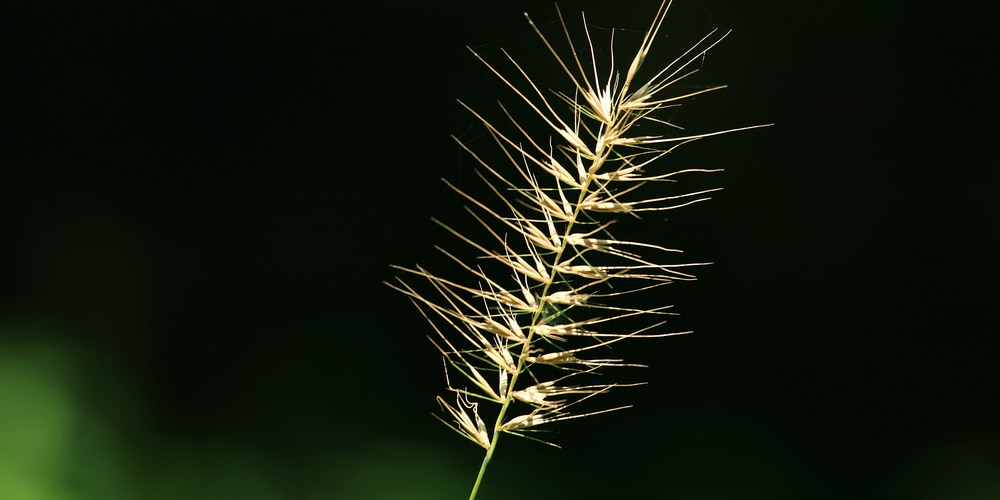
“Elymus hystrix” – A cool season Missouri native grass, it can tolerate low pH soils. Bottlebrush grass has a wide leaf blade and the seed heads resemble bottle brushes. It grows 1-2 ft tall.
Warm vs. Cool-Season Grass
There are two types of grass that grow in most parts of the United States: warm-season and cool-season grass. These two species have different growing habits, so deciding which type of grass is best for you depends on your climate, soil conditions, preferences, and budget. Missouri is in something called the transition zone, where both warm season and cool-season grasses can survive.
Differences
Warm-season grasses go dormant when it gets cold, which means they die back when the temperature drops. Cool-season grasses (like fescue and ryegrass) stay green year-round, even when temperatures dip below freezing.
Warm-season grasses are best suited for warm climates with hot summers because they grow quickly in warm weather and go dormant in cooler months. Cool-season grasses grow well in the warm months and turn a golden brown as they go dormant for winter.
In warm, dry climates with hot summers, warm-season grasses thrive because your lawn doesn’t have to compete for water from other plants or from the soil itself. You’ll see a much healthier warm-season lawn growing in the south than you will in the Pacific Northwest.
This is also why warm-season grasses are much more drought-resistant. Cool-season grasses don’t go dormant until the soil temperature drops below 50°F, so they have less to compete with for water evaporation from the soil and transpiration from plants.
